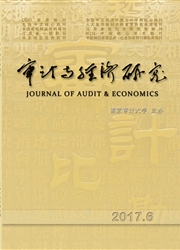

 中文摘要:
中文摘要:
根据间接税的再分配原理建立模型,运用广义熵指数(MLD)和2002—2012年的数据测算了我国三种主要间接税(增值税、消费税、营业税)对城乡居民收入分配的作用或效应。研究发现,我国现行间接税制对城乡居民收入分配不具有正向调节功能,反而具有逆向调节作用:与税前收入差距相比,税后城乡居民的收入差距增大;城乡内部收入差距的扩大要大于城乡之间收入差距的扩大。从三种主要税收各自的作用来看,增值税的逆向调节作用显得更突出一些,其次是消费税,最后是营业税;我国间接税制之所以呈现逆向的分配调节效应,主要是因为三种主要间接税的税率设计不科学、基本生活品(服务)和非基本生活品(服务)的适用税率没有拉开档距。
 英文摘要:
英文摘要:
According to indirect tax redistribution principle, and using the generalized entropy (MLD) index and data from the year 2002 to 2012 in China, we respectively build a model and measure the role or effect of three major indirect tax ( including VAT, consumption tax, business tax) adjusting income distributions in urban and rural China. It is found that the current indirect tax system has an unfair adjustment role, namely reverse distribution effect. Compared with the pre-tax income gap, after-tax income gap of urban and rural residents increases ; the expansion of income gap within urban and rural areas ( mainly resulting from the widening of rural income gap) is much higher than between areas. When considering three major tax imqucnce on income distribution, we conclude that the effect of VAT widening income gap is much obvious, followed by consumption tax, and finally the effect of business tax is the weakest of the three. The reverse adjustment role of indirect tax system mainly results from that the design of tax rates is not scientific. In detail, tax rate span between basic goods (services) and non-basic goods (services) doesn't appropriately expand.
 同期刊论文项目
同期刊论文项目
 同项目期刊论文
同项目期刊论文
 期刊信息
期刊信息
